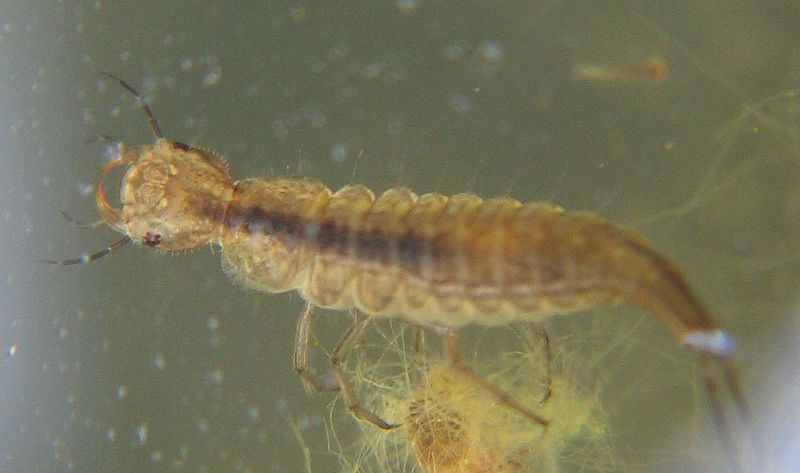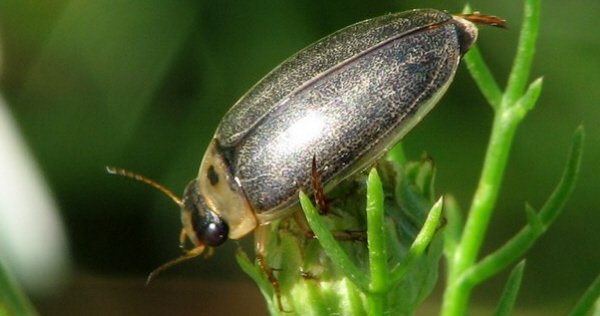|
Diving beetles are beneficial bugs that live in the water and and eat many other kinds of insects, including mosquitoes and flies. They eat so many different kinds of other insects that they are described as "predatory" which means that they "prey" on other living things. Both the adult diving beetles and their larvae are eat a wide variety of insects and other small animals that live in the water like frogs, toads, salamanders and small fish. They also eat dead and decayed animals, so they help keep the water clean. The adults have jaws that allow them to tear their prey apart. The larvae are so predatory that they are called "water tigers". The larvae have jaws like needles that they use to inject poisens into their prey. These poisons dissolve the body tissues of their prey and the water tiger sucks up the resulting liquid. Scientists study diving beetles in order to be sure that the ponds, lakes, streams and rivers where they live are clean. When water is polluted by too much salt or other chemicals, diving beetles get sick very quickly. Scientists can learn about the quality of the water for supporting wildlife by monitoring the health of diving beetles very closely.Both adult diving beetles and the larvae (the "water tigers") can bite people, but their bites do not usually hurt people or make them sick. However, if there are too many diving beetles in a pond or lake, they reduce the number of fist that live there because they eat the baby fist (baby fish are called "fry"). There are about 150 species of predatory diving beetles in the United States and Canada. They are large in size, ranging in size from about 1/16 of an inch to about 1-1/2 inches (or1.5 mm to 40 mm). Both adults and larvae come to the surface to breathe by sticking the back end out of the water. Adults carry air under the wing covers, and often have a small bubble of air attached to the back of their abdomen.
Adults come out of the water at night and fly around. Because they use the moon to navigate, they are attracted to any bright light. For this reason they are often found under porch lights, street lights and gas station lights. When people see diving beetles at night they are usually surprised by how big they are. Identifying diving beetles is tricky. Most species of
diving beetles are dark brown or black, and many of them have a lighter colored border
around their backs. The back legs, which are used for swimming, are the longest, and have long hairs on them. The larvae
are long and thin with large heads and powerful jaws. They swim using three pairs of legs and usually have the tail end sticking up in the air.
|






